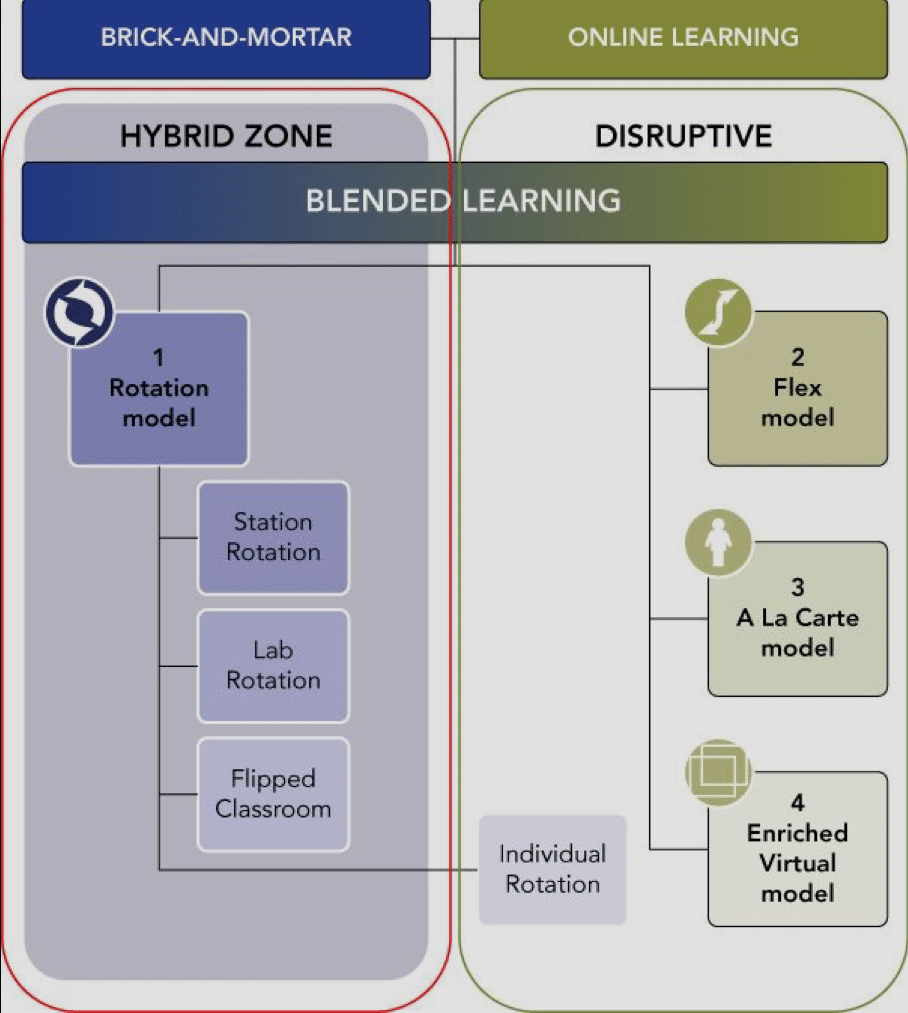You’ve likely heard the declaration that blended learning combines the best of online learning and face-to-face instruction, or simply, is “the best of both worlds.” A quick Google search of the phrase pulls up numerous examples, including “[b]lended learning programs truly are the best of both worlds for students, instructors and the institution” and “[b]lended learning combines the best of traditional, face-to-face teaching with online instruction.”
The idiomatic expression “the best of both worlds” describes two things that are seemingly at odds with each other and not designed to co-exist. A cheeseburger that helps you lose weight fits that description. You get to enjoy something fundamentally unhealthy with the benefits of health—a true best of both worlds situation. Using this type of language when referring to blended learning, however, is problematic for three reasons:
- It sets up a false dichotomy between online learning and face-to-face instruction. Online learning and face-to-face instruction aren’t opposites—they can go hand-in-hand in a way that is in harmony with the goals and aims of an effective education. In fact, as my colleague Thomas Arnett has written, when implemented in a brick-and-mortar setting, teachers have found that online learning allows them to spend more time working with students, both individually and in small groups. Thomas recently interviewed Megan Toyama, a history teacher at Summit Public Schools, who described how transitioning to blended learning has changed the nature of her work. “Instead of lecturing, I now spend my class time helping students develop their skills—such as learning how to write an argumentative claim or how to select evidence,” she said.
- It assumes quality, when high-quality blended learning depends on the implementation. The word “best” connotes quality. Think about the cheeseburger example. You’re likely imagining a juicy, delicious burger that helps to aid significant weight loss. But if I told you the cheeseburger was made with poor ingredients and the weight loss benefits were marginal or nonexistent, you probably wouldn’t consider it to be “the best of both worlds” anymore. The same is true of any blended-learning implementation. For this reason, when we developed the definition of blended learning, we were careful to stress that blended learning is not a normative statement of quality. It is a delivery model that can help to optimize for each individual student, but only when implemented effectively. When blended learning is not implemented well, teachers may feel replaced and students may feel like they’re mindlessly droning away on a computer. A classroom like this could be a blended one, but the students and teachers probably wouldn’t feel like it was the “best” of anything.
- It lacks recognition of disruptive models of blended learning and their trajectory to transform education over the long term. When schools aim to create a “best of both worlds” environment when implementing blended learning, they combine the benefits of both the new technology (online learning) and the old technology (traditional classroom) to improve along the initial definition of what a good classroom is meant to do. The Station Rotation model is one example of a blended-learning solution that marries the traditional classroom with online learning. Although its design affords teachers time for individual and small-group instruction and can give students an element of control over the path or pace of their learning, it keeps the traditional structure of age-based cohorts, the number and size of classrooms, and the role of face-to-face instruction largely intact. In this sense, “the best of both worlds” implementation leverages online learning within the confines of the existing classroom structure.

One common misunderstanding of disruption theory is that sustaining innovations are bad and disruptive innovations are good. This is false. Hybrid sustaining innovations are often a boon for consumers and are a necessary and vital part of industry growth. For example, a large number of drivers enjoy the benefits of an efficient hybrid vehicle, even as we may predict that purely electric vehicles are disruptive in the long term. Additionally, a large number of students and teachers benefit from a Station Rotation model because it provides them opportunities not generally available in the traditional classroom.
We shouldn’t lose sight, however, of the potential that disruptive models of blended learning have to transform classroom instruction entirely, as opposed to only offering sustaining enhancements to the current factory-based system. Disruptive models of blended learning allow students to control the time, place, path, and in some cases, place of their learning. Instead of incorporating online learning into the current classroom structure, these models rethink the structure entirely.
As Michael Horn and Heather Staker have written, the disruptive models of blended learning will replace the classroom as we know it in high schools and, to some extent, middle schools, but not necessarily in elementary schools, over the long term. But school leaders at all levels need to be cognizant of the potential that blended learning has to help facilitate student-centered learning at scale.
For more examples of schools that are using blended learning, visit our BLU school directory.



